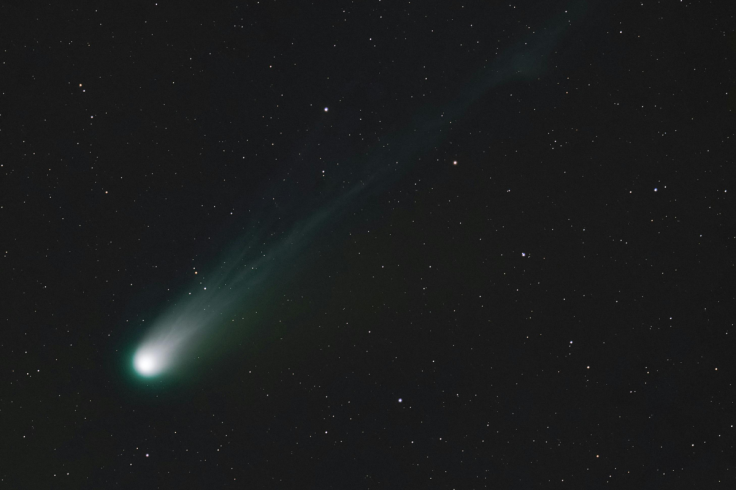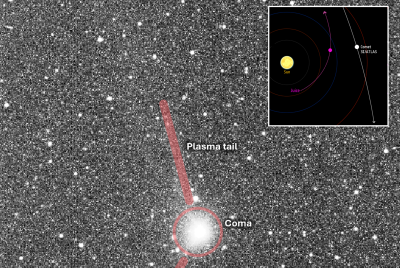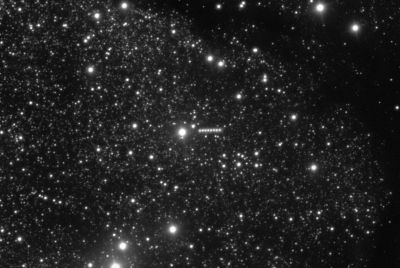Alien Invasion 2025 Feared As 'Giant Jet' Seen Flying Out Of 3i/Atlas Comet - But Here's What Scientists Actually Say
Harvard's Avi Loeb amplifies extraterrestrial speculation, potentially a 'Trojan horse' leveraging solar gravity for manoeuvre

Panic grips social media as whispers of an 'alien invasion 2025' spread, triggered by telescope images capturing a colossal 'giant jet' erupting from the interstellar comet 3I/ATLAS toward the Sun, fuelling wild theories of extraterrestrial probes amid its perihelion approach.
Discovered on 1 July 2025 by NASA's ATLAS telescope in Chile, this third interstellar visitor—racing at 58 km/s from the Milky Way's edge—has astronomers buzzing with NASA Hubble images revealing a fan-shaped plume of gas and dust stretching 10,000 km, while Harvard's Avi Loeb warns of a potential 'black swan event' with 30-40% odds of alien tech.
Discovery of 3I/ATLAS: Interstellar Comet's Fiery Arrival
Astronomers spotted 3I/ATLAS, also C/2025 N1 (ATLAS), on 1 July 2025 via the ATLAS survey at Río Hurtado, Chile, when it glowed at magnitude 18, 3.50 AU from Earth and 4.51 AU from the Sun, hurtling at 61 km/s near Serpens Cauda and Sagittarius.
Confirmed as the third interstellar object after 1I/ʻOumuamua and 2I/Borisov, its hyperbolic orbit—eccentricity 6.1374—proves unbound origins beyond our solar system, with excess velocity 58 km/s exceeding predecessors. Precovery images trace back to 7 May 2025 via NASA's TESS, revealing early activity at 6.4 AU, while Hubble's 21 July 2025 snapshot pegged the nucleus at 0.32–5.6 km wide, the largest such wanderer yet.
James Webb Space Telescope observations on 6 August 2025 detected CO2 at 129 kg/s and water at 6.6 kg/s, marking it CO2-rich and reddish from tholins, hinting at 7.6–14 billion-year age from the Milky Way's thick disk.
This galactic origins tale captivates, as 3I/ATLAS—potentially older than our Sun—nears perihelion on 29 October 2025 at 1.3561 AU, promising peak emissions for study. Amateur spotters hail its coma growth from 13,040 km on 21 June 2025 to 26,400 km by 2 July 2025, underscoring rapid activation en route.
The Giant Jet Eruption: Comet Activity Under the Microscope
Teide Observatory's composite image, released on 15 October 2025 via The Astronomer's Telegram, portrays 3I/ATLAS's dark nucleus amid a luminous coma, with a vivid purple fan-shaped jet propelling sunward over 10,000 km from sublimating ices.
Primarily dust and carbon dioxide, this comet jet eruption arises from asymmetric solar warming: the sunlit surface heats rapidly, vaporising volatile pockets into geyser bursts that fan out with rotation, some bolstering the coma while others form the anti-solar tail under solar wind influence.
Astrophysicist Miquel Serra-Ricart from Teide's Light Bridges stated, 'This is the usual. Jets are pointing to [the] sunward direction and [the] comet's tail in the anti-solar direction,' comparing the structure to Hubble's 2020 NEOWISE jet views.
Very Large Telescope spectra from July to August 2025 detected elevated cyanide and nickel emissions—without iron—mirroring solar system comets, while James Clerk Maxwell Telescope readings on 14 September 2025 quantified HCN at (4.5 ±1.9) ×10^25 molecules/s.
Debunking Alien Fears: Avi Loeb's Warnings vs Scientific Consensus
Harvard's Avi Loeb amplifies extraterrestrial speculation, positing a 30-40% likelihood that 3I/ATLAS conceals alien technology based on anomalies like its 5-11 km scale, 68 km/s velocity, and nickel alloy plumes unseen in nature, potentially a 'Trojan horse' leveraging solar gravity for manoeuvre.
In his 24 August 2025 analysis, Loeb wrote, 'The team of NASA's SPHEREx space observatory just reported tantalizing new data on the interstellar object 3I/ATLAS,' highlighting its mass and CO2 traits as red flags for artificial origins with profound human implications.
He advocates intensified International Asteroid Warning Network monitoring through January 2026, post its safe 19 December 2025 Earth approach at over 1.8 AU—more than 240 million km distant, per NASA assessments.
Countering this, Michigan State's Darryl Seligman emphasises, 'This is only the third such interstellar comet we've ever been able to study, and planetary scientists are super excited to learn about what comets in other solar systems are like,' chalking jets to perihelion-induced ice activation for compositional insights.
Consensus holds: JWST and VLT data affirm natural comet traits, no threats, as Billy Carson posted on X, sharing Gemini North's jet image amid the buzz.
Interstellar comet 3I/ATLAS blasts a jet towards the sun in new telescope image. A recent image of Comet 3I/ATLAS taken by the Gemini North telescope in Hawaii (background), alongside a new Two-meter Twin Telescope image of a jet erupting from the comet in the direction of the… pic.twitter.com/pf5b5xHtWw
— Billy Carson II (@4biddnKnowledge) October 24, 2025
© Copyright IBTimes 2025. All rights reserved.





















